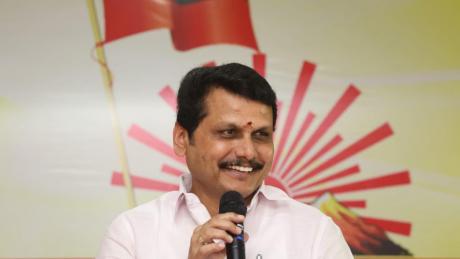The iconic launchpad in Sriharikota, Andhra Pradesh is back into business with a historical and yet another magnificent dream that will become India's stupendous milestone in its space mission. All eyes are on India for its next big lunar mission as the countdown begins for the launch of Chandrayaan 3, which is a part of the country's remarkable exploration of the Moon.
Chandrayaan 3 is the latest addition to its two predecessors- Chandrayaan 1 and Chandrayaan 2 and while the latter had a partial failure, the former was a huge success as it led to rewrite what we know about the Moon with crucial discoveries including its finding of the presence of water on the Moon. The mission of Chandrayaan 3 is to complete where Chandrayaan 2 left off after it got crashed on the Moon's surface.
Had Chandrayaan 2 been succeeded, India would have scripted a rare history of landing on the unexplored South Pole side of the Moon. As Chandrayaan 3 launch is blended with a phenomenal mission and with a new opening to India's space endeavours, the launch has drawn a sharp attention from across and beyond the country.
Chandrayaan 3 will be launched into space on July 14 - Friday at 2.35 pm and the launch vehicle has already been stationed on the launch pad in Satish Dhawan Space Port, Sriharikota, Andhra Pradesh. If Indian Space Research Organization (ISRO) triumphs in this Chandrayaan 3 mission of landing its own rover on the South Pole side of the Moon, it will be India's first-ever lander to touch down on the dark side of our natural satellite.
Besides being a rocket launch, why Chandrayaan 3 is paramount?
While Chandrayaan 1 & 2 carried orbiter along with the lander, Chandrayaan 3 would be carrying the lander and the rover that would be packed in it. As India already has active orbitters around the Moon, the country's space agency had refrained from sending another orbitter as the primary mission of Chandrayaan 3 will be to land on the south side of Moon, where Chandrayaan 2 had failed in 2019.
The rover in the Chandrayaan 3 is supposed to conduct a number of experiments on the Moon for a period of 14 Earth days -- one day on the Moon is equal to 14 days on Earth. The ISRO has said that Chandrayaan 3 is a step towards developing and demonstrating technology that would one day be used for interplanetary missions. Taking to Twitter, ISRO wrote, "Announcing the launch of Chandrayaan 3: LVM3 - M4/ Chandrayaan 3 mission: The launch is now scheduled for July 14, 2023, at 2.35 pm IST from SDSC, Sriharikota."
The ISRO Chairman Dr S Somnath said, "The launch will take place on July 14 and we will land on the moon successfully, that's our hope. The rover is 26-kilogram mass rover approximately, and it will work for two weeks. It will travel for duration of 15 days depending upon various scenarios. The distance will vary. So, we are hoping that if everything goes normal, our planned trajectory can be accomplished."
The Geosynchronous Satellite Launch Vehicle Mark III will be carrying the Chandrayaan 3 mission, which will have three objectives -- 1) to demonstrate safe and soft landing on Lunar Surface, 2) to demonstrate rover roving on the Moon, 3) to conduct in-situ scientific experiments. The ISRO has said, "Chandrayaan-3 consists of an indigenous Lander module (LM), Propulsion module (PM) and a Rover with an objective of developing and demonstrating new technologies required for Inter planetary missions. The Lander will have the capability to soft land at a specified lunar site and deploy the Rover which will carry out in-situ chemical analysis of the lunar surface during the course of its mobility."
The launch of Chandrayaan 3 will come in an era of growing space explorations from top countries such as the United States, China, and Japan. Along with them, the privately owned space companies - Elon Musk's Space X, Jeff Bezos's Blue Origin, and Richard Branson's Virgin Galactic are exhibiting a better competition in the race to the space. India joins the track for some of its incredible projects in the past and now, it is hoping to succeed in landing on the unexplored site on the Moon.
South Pole side of the Moon is said to be a tough terrain where no spacecraft has landed so far and when India's mission to land on the south side through Chandrayaan 2 had failed, the time has come to accomplish the mission again. Becoming the first country to land its rover on the south side of the Moon would reap a great importance to India's space technology and through this mission, India will present to the entire world about what the Moon is hiding for thousands of years.
Through Chandrayaan 3, India would get a prospect of studying the ice and large craters on the surface of the Moon and to avoid any last-minute mishap like how it happened for Chandrayaan 2, the latest lander has been equipped with the technology of changing the landing site in the wake of any hindrances in the original site. Moreover, the rover in Chandrayaan 3 mission will be landing hundred kilometers far from the site where the rover from Chandrayaan 2 crashed.
If India triumphs in Chandrayaan 3 mission, India can build a confidence of being a signifant country that expanded its lunar mission successfully. Outlook quoted Marc Norman, the planetary geochemist of the Australian National University in Canberra saying to Nature Journal, "The south pole region has very different geology from the region around the Apollo Missions (led by US), so Chandrayaan 3 will provide a close-up view of an entirely new region of the Moon."
So, it would largely like the world will view and study the South side of the Moon for the first time through India's upcoming lunar mission of Chandrayaan 3 and not only India, but the world also wish that the mission will be launched and landed as per the trajectory. Some reports say that it will take over 40 days for Chandrayaan 3 to reach the Moon as the initial stages of the launch include orbiting the Earth before getting into the lunar transfer trajectory.
As Indian people are excited to witness the historical launch and to know what it reveals from the Moon's surface, it is pertinent to note how Chandrayaan 2 mission was failed, which certainly had given a strong push to the Indian scientists to pursue this mission of landing the rover on the Moon again. The Chandrayaan 2 mission was launched by ISRO on July 22, 2019 and when the Vikram lander crashed onto the Moon's surface seconds ahead of landing, the mission got failed and after four years, ISRO is all set to launch its successor Chandrayaan 3 to succeed in the mission of unearthing the unknown side of the Moon.
Chandrayaan-3 mission:
— ISRO (@isro) July 11, 2023
The ‘Launch Rehearsal’ simulating the entire launch preparation and process lasting 24 hours has been concluded.
Mission brochure: https://t.co/cCnH05sPcW pic.twitter.com/oqV1TYux8V









Comments